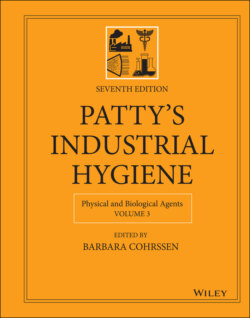Читать книгу Patty's Industrial Hygiene, Physical and Biological Agents - Группа авторов - Страница 84
4.2 Class 2
ОглавлениеClass 2 refers to visible lasers that emit within the 400–700‐nm spectral band with a very low power (less than 1 mW) that would not be hazardous even if the entire beam power entered the human eye and was focused on the retina. The eye's natural aversion response to viewing very bright light sources protects the eye against retinal injury if the energy entering the eye is insufficient to damage the retina within the aversion response. The aversion response is composed of the blink reflex (approximately 0.16–0.18 second) and a rotation of the eye and movement of the head when exposed to such bright light. Current safety standards define the aversion response as lasting 0.25 seconds. At one time, in order to simplify teaching the meaning of the aversion response, some termed it the “blink reflex,” but while this helped some students, it later was called into question when it was pointed out that some individuals did not experience the blink reflex under this exposure. Thus, Class 2 lasers have an output power of 1 milliwatt (mW) or less that corresponds to the permissible EL for 0.25 seconds. Examples of Class 2 lasers are laser pointers and some alignment lasers. Another conditional sub‐class, Class 2M is analogous to Class 1M, but the optical hazard is applicable only for visible lasers that would be Class 2 if measured only with a 7‐mm collecting aperture.
As a note, at one time, US safety standards also incorporated a sub‐category of Class 2, referred to as “Class 2A.” Class 2A lasers, which were not hazardous to stare into for up to 1000 seconds (16.7 minutes). Most laser scanners used in point‐of‐sales (super‐market checkout) and small inventory scanners are Class 2A, but this class was no longer required when the ELs were adjusted (ca. 2000) such that a point‐source laser was no more hazardous if viewed for any duration greater than 10–100 seconds.
